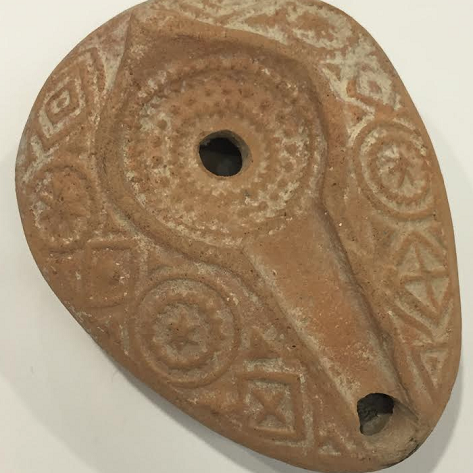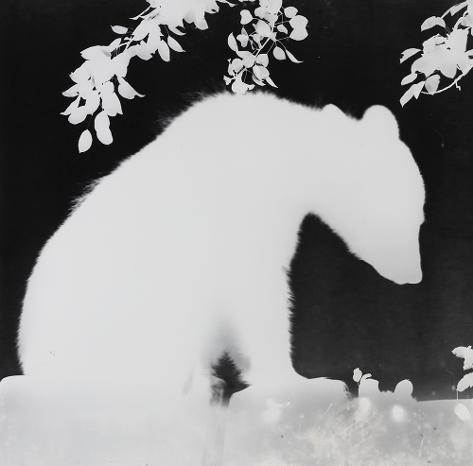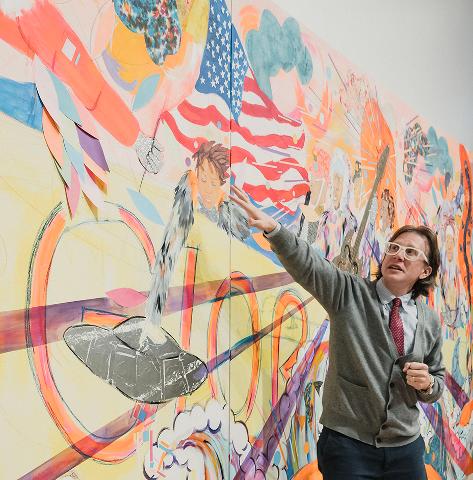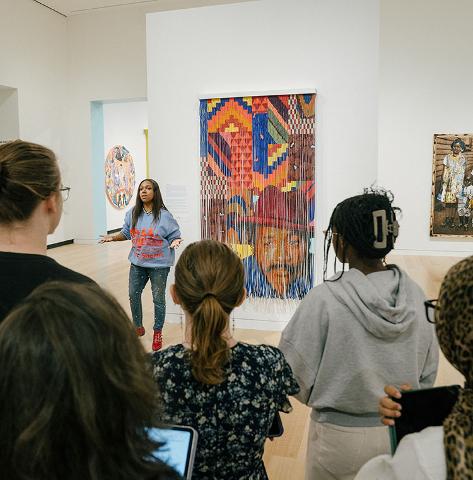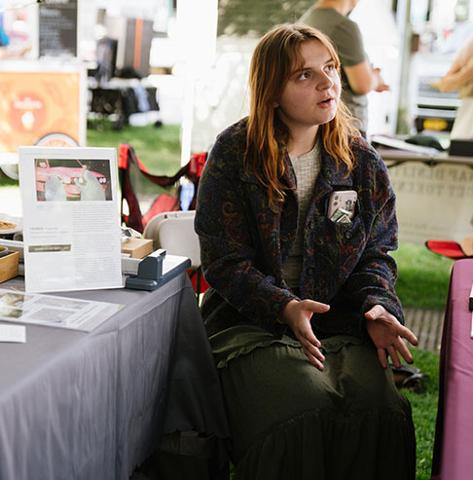Images courtesy of the Ruth and Elmer Wellin Museum.
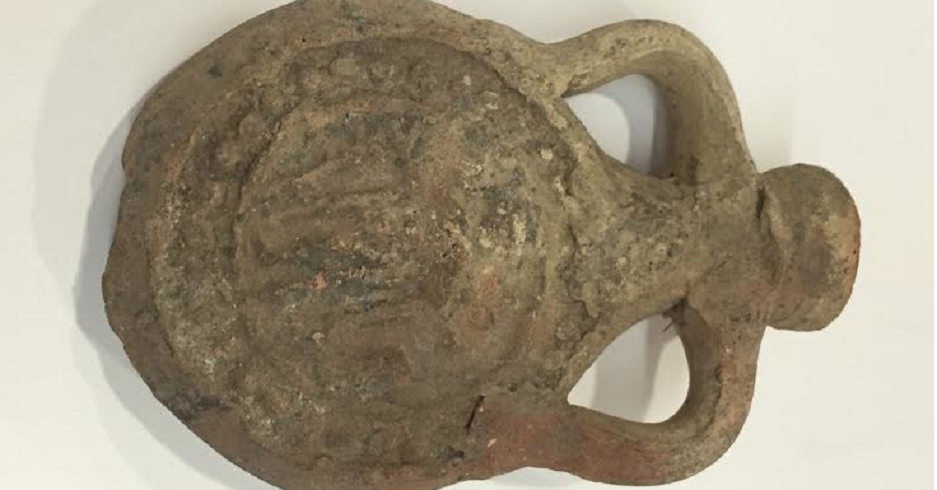
In the collection of antiquities in the Wellin, many of the objects have utilitarian functions. For instance, oil lamps served as light sources, amphorae stored oil and wine, and glass bottles held perfume. In addition to these, there are several objects in the collection that had specialized religious functions. One of these such objects is a pilgrim flask that served as a souvenir that pilgrims could purchase at a religious site, fill with holy oil or water, and take home as a memento of their experience. When I first came across this vessel, I wasn’t sure what it was. The round and flat flask, referred to by archaeologists as an ampulla, had two handles on each side and was impressed with an image that was difficult to decipher due to centuries of exposure. Upon closer examination, I was able to discern the relief composition, which featured a man with outstretched arms and flanked by stylized animals.
After searching through other museum’s antiquity collections, I found numerous identical ampullae identified as pilgrim flasks with an image of Saint Menas. I learned that Saint Menas was a Christian martyr, who had a shrine built in his name in the 4th century A.D. at Abu Mina in Egypt - a popular pilgrimage site. The flasks were mass-produced from the late 5th to the mid-7th century at the shrine, and archaeologists have discovered these Menas flasks in Palestine, Asia Minor, Greece and Cyprus.
The Wellin’s flask shares features with other Menas flasks produced ca. 610-650, which was the most active time of production. The flasks from this period, including the one in the Wellin, feature Menas wearing military garb, flanked by two camels, in a praying pose with outstretched arms and surrounded by a frame of dots. Perhaps a Cypriot pilgrim visited the site in Egypt and purchased this flask as a souvenir, as archaeologists believe numerous other pilgrims to have done.
This object illustrates the dynamic history of the Cypriots especially well and can help us better understand the daily lives of the ancients and, in doing so, we can narrow the gap between antiquity and modernity. Thus, it is fitting that I conclude this blog series with this object highlight as it not only speaks to our shared sensibilities with the ancients, but also demonstrates how significant Cyprus is in the discussion of antiquity. Although it is small and often overlooked in art history, Cyprus offers a rich and dynamic story that shows just how much cultural exchange occurred in the ancient world.
When I began this project, I hardly knew anything about Cyprus or the objects in the collection, but with a little research, I was able to find an incredible story within them. So, the next time you are in a museum and see an object of interest, whether ancient or modern, simple or rare, I encourage you to take the time to uncover its own hidden history and unpack the past.
This post is the tenth and final part of a series about the origins and history of the Wellin’s recently acquired collection of Cypriot antiquities. For part one, visit:https://www.hamilton.edu/wellin/wellinformed/unpacking-the-past


